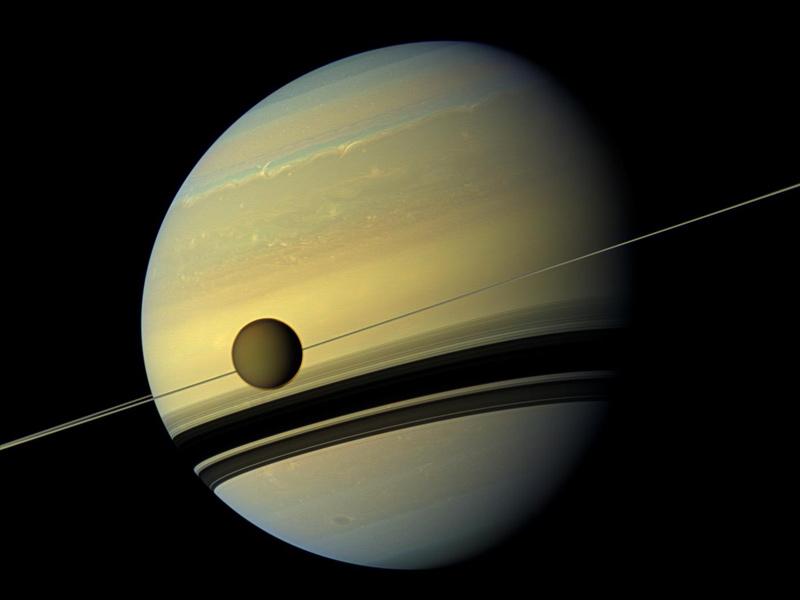
When we think of space, and the various organizations that associate with space, the National Aeronautics and Space Administration, or NASA, is probably one that immediately jumps to mind. NASA’s vision, as stated on their website, is “To discover and expand knowledge for the benefit of humanity.” People like me eagerly follow NASA and their missions, for there is the idea that every day, we are closer to revealing the secrets of the universe. In a recent update, NASA has revealed the next location in our Solar System that is to be explored: Titan, Saturn’s largest moon. Furthermore, it’s the only moon in the Solar System that has clouds and a planet-like atmosphere. Because Titan has an orange haze surrounding it, people don’t usually associate the moon with potential signs of life, as orange isn’t a color commonly associated with organic life forms, but according to an article by Astrobiology Magazine, there might be potential for biomolecules to form. See, Titan is extraordinary in that it has lakes, rivers, and seas. These bodies of water contain liquid hydrocarbons such as methane and ethane. Furthermore, underneath the crust, an ocean made up of water lies unexplored. It could be a place for life to potentially exist.
In 2019, NASA announced a new mission, named Dragonfly, that will fly to Saturn’s exciting moon and collect samples. According to their website, Dragonfly will launch in 2026 and arrive in 2034, traversing across the moon looking for chemicals that will help scientists unlock the secrets of this moon. Dragonfly exists off the backbone of the Cassini mission, which explored Saturn and finally crashed into the planet’s atmosphere on September 15, 2017. Using 13 years of data, Dragonfly can choose a calm spot on Titan to land, and look for scientifically interesting targets. The thing is, life as we think of it cannot exist on the planet’s surface, because it is so far from the Sun. The moon shivers at an astounding -290 degrees Fahrenheit, and also has a surface pressure 50 percent higher than that on Earth. Be as that may, Titan’s organic molecules still excite scientists. The atmosphere on the moon is dominated by nitrogen, methane, and oxygen, all important compounds in the building blocks of life.
2034 seems so far away, but it’s only 14 years. Those following the exciting new research and data will receive answers in the blink of an eye. Here’s to hoping that the next decade will be the harbinger of the next chapter in space exploration!
